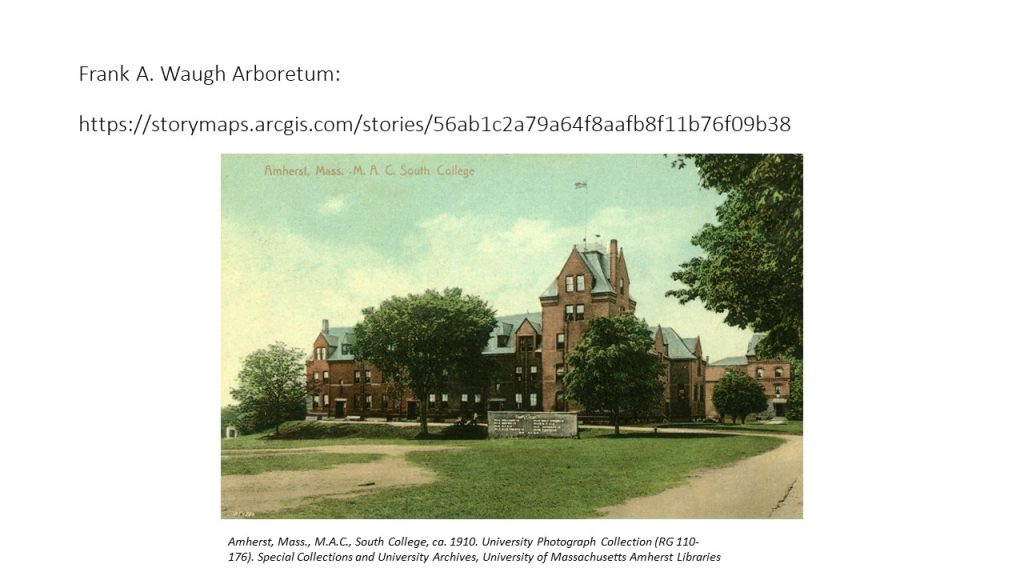
The history of the Frank A. Waugh Arboretum-
” The Frank A. Waugh Arboretum at the University of Massachusetts, Amherst is built on the historic territory of the Nipmuc, Pocumtuc, and Nonotuck Nations. Following European colonization and the often violent destruction of Native American agroforestry stands, the land currently occupied by UMass was mostly cleared and then replanted. Over the course of more than a century, the landscape that is the Frank A. Waugh Arboretum would transform dramatically.
There are many individuals throughout post-colonial campus history who have contributed to the arboretum in various ways. One of the most notable of these individuals was William S. Clark. Clark, the third president of Massachusetts Agricultural College, established a relationship with Hokkaido, Japan that would have a centuries-long impact on our campus landscape. At the end of the 19th century, Clark and his student William Penn Brooks introduced a number of accessions from Japan and east Asia, several of which still remain on campus today. At the onset of the 20th century, our university landscape prospered from the efforts of Frank A. Waugh, who was department head of Landscape and Gardening from 1902-1939. In 1944, President Hugh Potter Baker officially designated the campus as the Frank A. Waugh Arboretum in tribute to the many contributions Waugh made to our campus arboretum.”
A map of the UMass campus which features the campus trees all part of the Arboretum is available at the link above.

